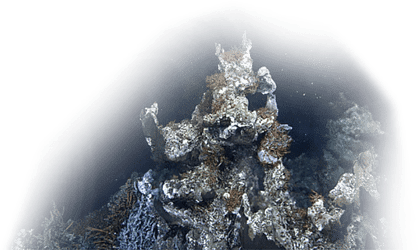
Visiting scientist Christian Stranne received his PhD in physical oceanography (2012) from the University of Gothenburg in Sweden, where he studied large-scale Arctic sea ice dynamics and coupled ocean-sea ice-atmosphere interactions.
Christian has held a two-year postdoc position at the Department of Geological Sciences of Stockholm University, focusing on methane hydrate dynamics and numerical modelling of multiphase flow in hydrate-bearing marine sediments. He also received a postdoctoral fellowship from the Swedish Research Council in 2015, and has been a visiting scholar at the Center for Coastal and Ocean Mapping at the University of New Hampshire.
At ONC from 17 April until 25 May, Christian will be investigating mechanisms controlling the observed episodic nature of seafloor gas venting near the Clayoquot Slope node of ONC’s NEPTUNE observatory, and specifically how the dynamics of overpressure development and hydraulic fracturing may play an important role.
Ocean Networks Canada: You have a PhD in physical oceanography. What interested you in this field?
Christian Stranne: “I did not really know what oceanography was until I began studying it, but I soon realized that it was something for me. I had studied mathematics, and it felt refreshing to apply the math on real physical problems. Even though I changed my focus after completing my PhD, toward geophysics and fluid flow in marine sediments, I still have a passion for physical oceanography.”
ONC: You have done research on the Arctic, and now the Pacific. You were also a visiting scholar at a university in the Atlantic region. What are the differences between the three oceans? What are the similarities?
CS: “From an oceanographic point of view, there are several differences between the world’s oceans. The Pacific Ocean is, on average, less saline than the Atlantic Ocean, which actually means that the sea level on the Pacific is slightly higher than the Atlantic. The Arctic Ocean sticks out in a few different ways compared to the other world oceans, partly because it is the only ocean covering a pole. It has the lowest salinity of all oceans, a significantly larger proportion of shallow continental shelf seas, and it is partly ice-covered year round. Arctic sea ice dynamics is a fascinating topic that I had the opportunity to study during my PhD; the sea ice is actually part of the reason why the Arctic is currently warming at a faster pace than anywhere else.”
ONC: What is the biggest highlight from your past research?
CS: “The research that led up to my current project here at ONC is, from my perspective, my most interesting contribution to science so far. Episodic and irregular seafloor gas venting is often observed at known vent sites around the world, but we do not know what is controlling the venting variability. By developing and integrating a geo-mechanical module to a numerical sediment fluid-flow model, we can now study the development of overpressure and the formation of hydraulic fractures within sediments. Our model simulations show that hydraulic fracturing in sediments can lead to episodic gas venting at the seafloor, very similar to observed venting at Clayoquot Slope on ONC’s NEPTUNE observatory.”
ONC: At ONC, you will be researching seafloor gas venting offshore Vancouver Island. How does ONC technology/data enable this research?
CS: “ONC is monitoring the gas bubble emissions from the seafloor and into the water column with a rotating bottom-mounted multibeam sonar. Data has been collected over several years and is, to my knowledge, the longest such time series in the world. In this project, we use this unique data set in combination with numerical modeling to learn more about what is controlling the seafloor gas venting variability. This study would not be possible without ONC data.”
ONC: Victoria is a long way from Stockholm. Have you ever been to B.C., and what are you looking forward to most during your stay here?
CS: “This is my first visit to B.C. My girlfriend and our two-year old daughter are also here, and we are really enjoying our stay in Victoria. During weekends we have been exploring the area, and we have a long list of beaches and trails that we still want to check out and are ticking off one-by-one.”
Click on links for Q&As with ONC’s other 2018 visiting scientists:
